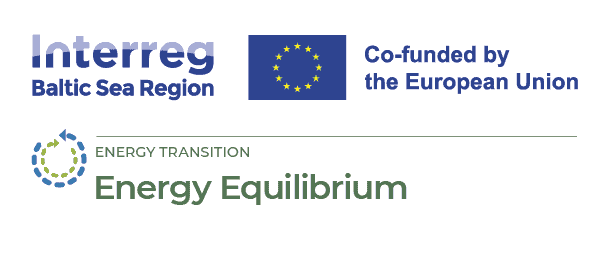
Energy storages development in South Ostrobothnia, Finland
30 January 2025
With energy prices on the market fluctuating widely in Finland, even on an hourly basis, there is a growing demand for energy storage systems. Improving energy efficiency and storage will lead to cost savings, while reducing emissions will improve air quality and combat the global greenhouse effect at the same time. Electricity and heat energy storage can be used to smooth out cost spikes caused by price fluctuations: when energy prices are high, energy storage loaded at a lower price can be used. There may also be a situation where no energy is available from the energy source in use. Such situations include, for example, a power plant failure or an interruption in electricity transmission. In such cases, if the energy required has been pre-charged into batteries or storage when it was available, it can be used in a situation of energy shortage.
Finnish energy companies have started to invest in the energy storages, there are several examples in Ostrobothnia during past years.
Kokkolan Energia invests 20 million in a district heating battery and electric boilers
Kokkolan Energia will invest in heat production and build two electric boiler plants and a district heating battery in the Kokkola industrial park. According to the company, these are important investments in the emission-free heat production system being built in the area: they will allow for better optimisation of production in response to changes in electricity and fuel market prices. The district heating battery can store district heat and distribute it to customers according to demand. The thermal storage battery also offers more possibilities for the storage and utilisation of waste heat from industry.
The investment also requires the approval of the owner of the energy company, the City of Kokkola. The investment will be approved by the city’s Corporate and Urban Development Department. (Reference)
Vaasa Vaskiluoto has a thermal energy storage facility that diversifies heat production in the area
This innovative energy storage facility will continue to play a crucial role in the future. In addition to immediately reducing the use of coal, it will bring a lot of flexibility to future production solutions.
In winter, the energy storage facility will be heated by the thermal energy generated by the Vaskiluoto power plant’s electricity production. This will allow all production to be utilised more efficiently, while reducing the use of coal for district heating by more than 30%. In addition, a separate information system has been built into the energy system to control the operation of the storage and the other heating systems, based on the market price of electricity.
In the future, the thermal energy storage can be used regardless of the production mode. It is therefore an example of sector coupling. This solution will enable the energy storage facility to be used regardless of the energy production solutions chosen at Vaskiluoto. In the future, the storage facility can be heated by wind or solar power, for example. If wind power is abundant on a windy day, it can also be used to heat the energy storage facility. (Reference)
The solution is a long-life energy storage system
The underground former oil storage facility used as a heat store is, in principle, very durable. The Vaskiluoto thermal energy storage facility is reportedly the largest energy storage facility in use in Finland. The total volume of the caverns is 210 000 m3 and the charging and discharging capacity is 100 MW.
Facts about the Vaskiluoto thermal storage cavern:
- Built in the 1970s to store oil;
- The caverns were emptied of oil and cleaned in the late 1990s;
- The thermal storage caverns have a capacity of 150 000 m³ and 60 000 m³ (210 000 m3 in total);
- The loading and unloading capacity is 100 MW, which is sufficient for about 4 to 20 days, depending on the unloading capacity. By comparison, the largest electric battery currently under construction in the Nordic countries has a charging and discharging capacity of 30 MW;
- The energy storage capacity is 7-9 GWh;
- Location: 30 metres below ground level at Vaskiluoto in Vaasa;
- Size: height 22 and 30 m, length 178 m and 313 m. (Reference)
In Seinäjoki, EPV Energy built a district heating battery and an electric boiler
In Seinäjoki, EPV Energy built a district heating battery and an electric boiler at the Seinäjoki power plant site in 2022. The new investment was a big decision for the company, but it also supported the company’s New Electricity Revolution strategy and its promise of emission-free energy production. Together, the district heating battery and the electric boiler will act as components in the heat generation system of the future.
EPV aims to link the energy needs of different industries through renewable electricity and to develop solutions for heat generation through renewable electricity production.
The investment will enable a regional reduction of CO2 emissions of around 50 000 tonnes/year. (Reference)
These investments will help to reduce CHP generation at times of low electricity market prices. At the same time, fossil fuel use and emissions can be reduced.
The district heating battery planned for Seinäjoki will have a volume of 10 000 m3, a capacity of 400 MWh and a charging and discharging capacity of 40 MW. The boiler associated with the system will have a capacity of 40 MW.
The existing electricity transmission and power plant infrastructure at the Seinäjoki Voima power plant site will allow the project costs to be kept within reasonable limits. The combined cost of the construction of the boiler and the heat accumulator is about EUR 5 million and the investment has also received energy support from Business Finland. (Reference)
Thermopolis Oy aims to increase the use of renewable energy
Both municipalities and businesses in Finland are in need to develop their energy use in order to find cost-saving and emission-reducing solutions. Many municipalities need to re-plan their energy supply for the future, as well as companies also need to develop their own business to meet future needs and market demand. The Energy Equilibrium project has developed an energy system calculation and modelling tool to support decision-making by municipalities and energy suppliers. The tool can be used to enhance the development of local renewable energy action plans, with a focus on promoting energy storage infrastructure.
Thermopolis Oy cooperates with municipalities in the South Ostrobothnia region of Finland. This cooperation largely concerns the energy solutions used and considered by the municipalities, as well as the maintenance and development of their properties. The Energy Equilibrium project’s goal for 2026 is to disseminate the results of the project to the general public and target groups. Stakeholders are involved in municipal energy production, maintenance of municipal buildings (especially energy), development of municipal buildings and other energy development projects.
This article was prepared by Sauli Jantti.





